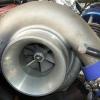N/a Rb30 W/ Rb26 Head?
Announcements
-
Similar Content
-
Latest Posts
-
By R34_GT to Turbo · Posted
TD05 or maybe pulsar PSR2867r Gen 2? id love a garret but it’s quite out the budget for now and I’m not chasing crazy power. yeh fuel pump haven’t looked into but whatever works, kind of last on my list. Nistune because it’s simple but Ik it’s a lot of pain especially as I’m auto +t with the whole seperate TCM etc still investigating that. Haltech id love but once budget tight for now atleast. finally the reason I’m trying for a plenum instead of the stock intake is I already have a standard Intercooler mounted etc. so the ports are on both sides so trying to not have to go over the clutch fan radiator etc. trying to find a good deal return flow if I don’t than this will do for now I guess. btw any ideas with that, apparently some people have to cut blades to reduce it from hitting the Intercooler piping over the radiator ? Thanks -
I'm going to guess, likely headunit, and the twin cable likely went to an amp as a remote turn on feed.
-
And it's going to get punished by the AC being set to "Farking Cold!" too!
-
There's no way that we can tell what they were for because they are not stock. Somebody had something installed that needed an earth and took it 98% out.
-






Recommended Posts
Create an account or sign in to comment
You need to be a member in order to leave a comment
Create an account
Sign up for a new account in our community. It's easy!
Register a new accountSign in
Already have an account? Sign in here.
Sign In Now